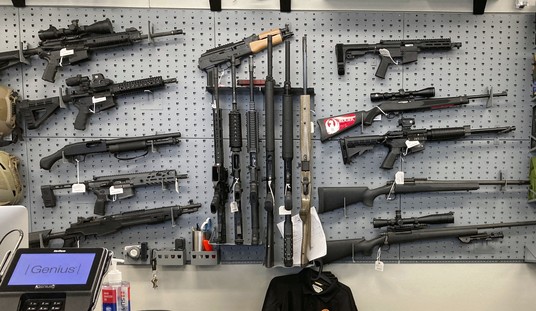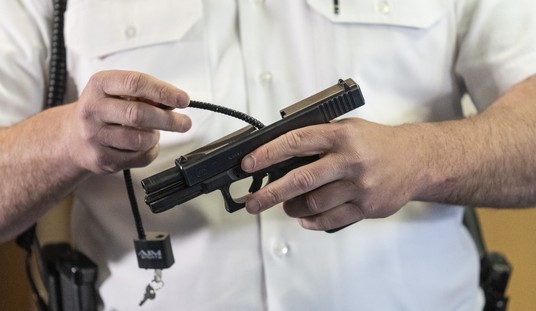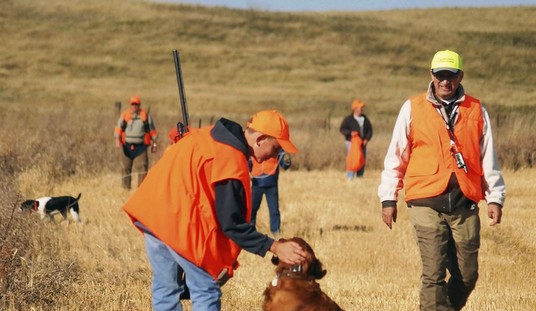The much vaunted “Brady Bill” (PDF) turned 20 February 28 with very little media fanfare, an unusual development for the single gun control law that has affected the most people in the modern era.
Brady requires that everyone purchasing a firearm through a licensed dealer undergo a background check.
The Firearms Coalition thinks that there may be a very good reason that the media doesn’t want to talk about Brady: it has spent hundreds of millions for inconsequential results (our bold below):
The Brady Campaign to Prevent Gun Violence is touting the 20th anniversary of implementation of the Brady Law, requiring that buyers at gun shops pass a background check before every purchase. They’re marking the anniversary with a “report” extolling the program’s success and promoting their current target: criminalization of private firearm transfers. The catch phrase for that campaign is “Finish the job.” The problem is that the job will never be finished. The Brady’s solution for failed gun control laws is always additional restrictions on guns, and those “steps in the right direction” lead directly to bans, registration, and confiscation – as happened in the UK, Australia, pre-war Germany, the Soviet Union, etc., and as is currently happening in “baby steps” in California, New York, Connecticut, and New Jersey.
The Brady Law is a dismal failure, despite the Brady’s loudly trumpeted claim of 2.1 million firearm purchases blocked over the past 19 years. While that number sounds impressive, it is meaningless in real terms of reducing violent “gun-crime.”
Federal prohibitions on gun ownership are extremely broad. Anyone who has ever been convicted of any felony – violent or not – is prohibited from ever possessing a gun or ammunition – or employing anyone who possesses a gun or ammunition – for life. Same for anyone ever convicted of a violent misdemeanor against a domestic partner – like slapping a cheating boyfriend – even if the incident happened decades ago. The lifelong ban also applies to anyone ever dishonorably discharged from the military. People who legally, under state laws, use medical marijuana or marijuana-based extracts for treatment of pain or side-effects of chemotherapy are also prohibited from guns and ammunition. Legal recreational marijuana users in Colorado and Oregon are also subject to the ban.
Possibly the most egregious category of prohibited persons is those who are labeled “mentally incompetent,” This category includes adults with Down’s syndrome, victims of Alzheimer’s, and over 100,000 veterans suffering from things like head trauma or PTSD. Many of these people are very competent and functional in most areas, but might have trouble dealing with bank accounts or legal documents. Under current law, it is a federal felony for the father of an adult with Down’s syndrome, or the life-long shooting buddy of an Alzheimer’s patient to take their child or friend to the shooting range for an afternoon of harmless plinking.
With such a broad range of people prohibited from purchasing or possessing firearms, it’s no wonder that we still get people applying to purchase a gun who don’t realize they’re prohibited. These people account for about 1% of all background checks submitted. They are not dangerous, but they are legally prohibited from purchasing firearms and their attempts at doing so are effectively blocked by the Brady Law. About 25% of those blocked file appeals challenging their denial, and about 5% win. The other 20%, who obviously, strongly believed that they were not legally prohibited, lost their appeal and the denial was sustained.
To put things in perspective, in 2010, the last year for which we have good numbers, over 6 million applications were filed with NICS. Of those, 72,659 were denied. That seems like a lot, but here are the really significant numbers: Of the 72,659 prohibited persons who illegally attempted to purchase a firearm from a licensed dealer, only 62 were considered worthy of prosecution, and of those only 13 were found guilty.
That means that each year, you and I pay hundreds of millions of dollars to investigate millions of lawful firearm purchases, only to prevent a few thousands of sales to people who federal officers and prosecutors don’t consider dangerous, and ultimately fine or incarcerate a dozen or so criminals.
Brady has cost hundreds of millions of dollars, and the Department of Justice has requested $150 million more just for 2014.
All to prosecute perhaps a dozen criminals.








Join the conversation as a VIP Member